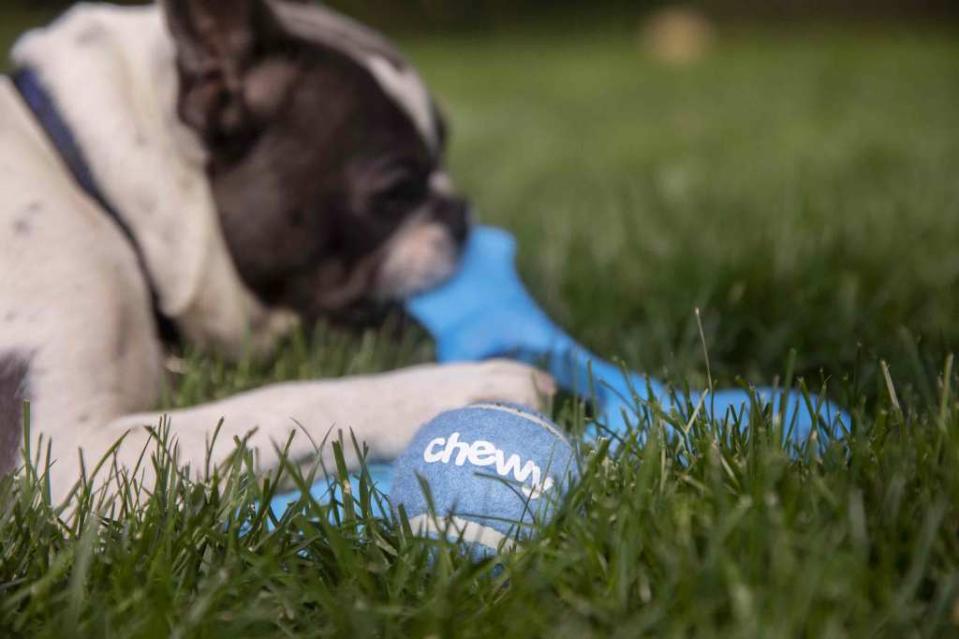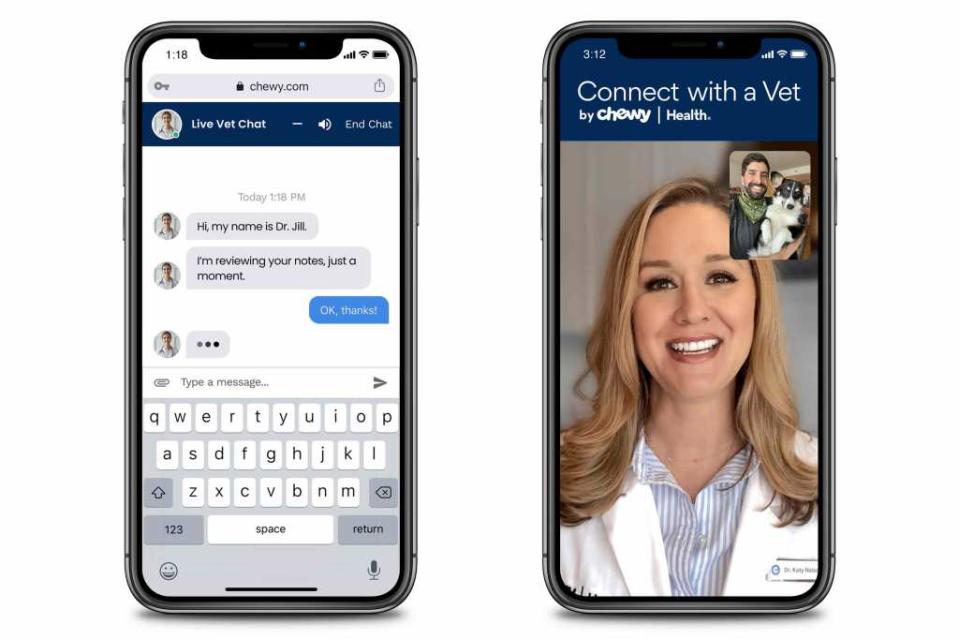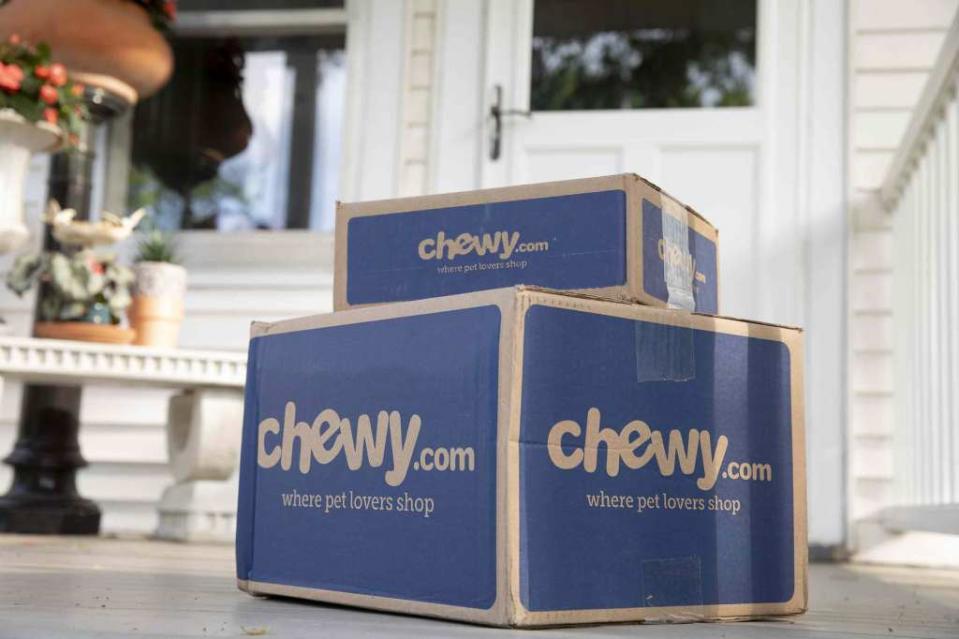Chewy CEO Sumit Singh on the pet boom, the pandemic, and moving from puppyhood to profitability
Since Sumit Singh became CEO of Chewy in 2018, the buzzy online retailer has only tightened its stranglehold on Americans' pet product spending. But Singh nonetheless has had to contend with Wall Street's doubts that the company can become reliably profitable—a goal that has proved elusive.
Chewy is getting closer. After reporting two straight quarters of profit earlier this year, it had a tiny loss in its most recent quarter. That might not seem like a huge win—until you compare it to the massive net losses Chewy racked up in 2018 and 2019. The company lost more than $250 million in each of those years, due to the astronomical costs of marketing and of beefing up its e-commerce infrastructure. Still, those investments have shown top-line returns: Chewy enjoys a dominant market share and continues to grow fast, landing a spot on the Fortune 500 last year as revenue rose 47% to pass the $7 billion mark.
Singh, a former Amazon and Dell executive, has worked to further professionalize the e-commerce darling as it moves from puppyhood into the next stage. And he's not losing sight of the thoughtful touches that have endeared Chewy to tens of millions of pet owners; the company still sends personalized cards to customers, for example, when it finds out a pet has died.
In an interview with Fortune, Singh talked about the challenges of balancing growth with a customer-centric culture, his company's forays into pet health and veterinary services, and what he learned from Jeff Bezos’s infamous question-mark emails.
This edited Q&A has been condensed for space and clarity.
Riding a pandemic boom
The pandemic led to a lot of pet adoptions and more spending on our furry friends, helping Chewy to post, for the first time, two back-to-back profitable quarters earlier this calendar year. How can you be sure Chewy gets to a sustainable profitable growth trajectory?
Early on, we had a bit of a mission to "get big fast" and "to get fit fast." That is an important operating mission statement. In e-commerce, you see this a lot where companies only focus on growth, thinking that will automatically lead to profitability. But it's not a customer-led mission statement when you're trying to ensure that you remain disciplined in your pursuit of profit.
One of the earliest things that I did when I took over as CEO was to rewrite our mission statement. And that mission statement is to be the most trusted, convenient destination for pet parents and partners everywhere.

Today we have an assortment approaching three times that of when we started; we have a full proprietary branded line of products, we have a health care ecosystem that we're continuing to build. We have a lot more opportunity to get pet parents to spend more, because we have incrementally more choices to offer to them. That's what provides us the confidence that we're going to be able to sustain the momentum. I think a lot of e-commerce companies get kind of drunk on growth and then think that it'll go on forever.
How do you prevent Chewy from becoming simply a utility in the eyes of consumers when they have endless shopping options?
The secret sauce has to be an intentional and deliberate focus on building a culture that is maniacally focused on doing the right thing for the customer. What I spend the most amount of my time thinking about as a leader as we scale is, "How are we protecting customer orientation, as the company grows? How is the culture absorbing the rate of change?" If we stop innovating, if we stop caring, if we stop delivering a great experience, we will fail. And that will be on us.
When companies are growing super fast, problems like insufficient controls or poor culture can become part of their bones, and you may only see that later when they mature. From your point of view, how do you know Chewy won’t fall into that trap?
The defects and the cracks will occur, and early, fast momentum will actually hide them from you, up until it slows down. We approach our work with a deep intellectual curiosity and a constant desire to understand and improve. Customers sometimes don't get the service that they deserve and say, "Hey, here's what I'm trying to tell you guys and you're not acting against it." And you know what? In most cases they'll get a response from me within the hour. I learned that at Amazon, by the way, I learned directly from Jeff [Bezos], because I thought it was a wonderful mechanism. You’ve heard about the question mark e-mails that Jeff sends [to prioritize company responses to customer complaints]. And the culture piece of that is you’ve got to fight bureaucracy early on.
A focus on health
Chewy is pushing hard into health care, including connecting customers with veterinarians and telehealth. Why is this an important part of your plan to sustain growth, and how does this help you compete with brick-and-mortar rivals like PetSmart and Petco Health & Wellness that operate vet clinics?
We believe a third of pet parents in the U.S. do not take their pets to the vet at a recurring frequency. Compliance [with medication regimens] is a very big challenge in health care. The way health care is being thought about, traditionally in a legacy sense in physical brick and mortar, is not the future.
So this essentially recognizes that a pet and a pet parent in their life cycle have greater needs than just buying food or toys or accessories. There are real health care needs, there are real services needs, and we have an obligation to connect those.

So why don't you need stores or physical places to offer services, health care and otherwise? You can't groom dogs online, as one analyst pointed out.
I haven't said that we don't need stores. What I've said is that so far, stores aren’t a priority for us, and the reason is the following: When 70% of our sales are delivered via a subscription program, customers are telling us that we are delivering reliably and predictably. In addition, customers in this category aren't waking up and saying, "Oh shoot, I need my cat litter delivered in the next two hours." The customers in this category aren't yet demanding that. I don't look at not having stores as a disadvantage that we cannot overcome with a superior level of experience.
E-commerce is getting increasingly scrutinized for its environmental costs. What do you feel the industry and Chewy specifically can do to allay those misgivings?
Chewy, as you know, is a young company, and so far our sustainability efforts have started in the fulfillment center, where the [environmental] footprint is the largest, and we've transitioned to energy efficiency with solar lighting and panels and green initiatives and all of that. We're also right now analyzing our carbon footprint because of the number of packages that we actually send out. A couple years ago we reduced our box footprint by about 20% by readjusting our carton sizes. Now we're starting to move toward sustainable, biodegradable packaging. I think there's a lot more work that we need to do in this space.
Where do you stand on the work-from-home versus return-to-office dilemma challenging all CEOs?
This last year and half has been very eye-opening and enlightening in terms of what the future of work can look like and should look like. Leaders such as myself who'd never worked in a remote environment, we've seen the power and the advantage to productivity offsite. That being said, you know, for a younger company like ours, we believe that the power of on-site collaboration, on-site creativity, on-site productivity is not fully replaced by working fully remotely. But we are not being prescriptive on the number of days that teams come in, and we'll let the teams figure that out and see what models work for what teams.
A lot of people are worried about jobs disappearing for good to automation. What can you say to allay fears?
Automation has allowed us to improve ergonomics and safety. Our injury rate is down 60% on a year-over-year basis, and it's allowed us to improve productivity per employee because we're using high-speed shipping sorters rather than pickers walking several miles per day. As a customer, you want to pay for that box that arrives at your doorstep, not for all the wasted effort. I think this argument actually is the same as when automobiles first came. Innovation breeds superior business models that actually generate a different type of a service and industry that in turn generates greater employment, not less employment. That's been proven time and time again.

Given customers’ growing preoccupation with better corporate citizenship and ESG, what can Chewy do to show more social activism?
During the pandemic, what we did was recognize that the shelters and rescue communities were at the front lines of the adoption race. They didn't have the right kind of resources, they didn't have the right kind of tools, they didn't have the right kind of support system like marketing, creative, analytics. So we actually started there, and we said, “Hey, we'll develop it, you can use it for free.” We're similarly starting to think about what we can do with veterinarians right in being able to kind of help them run their office better and being able to give them a better work/life balance.
Can you reconcile your old mission statement, of becoming the biggest pet retailer, and your current one?
The mission statement that we have now—to be the most trusted convenient destination for pet parents and partners everywhere—that is the input into becoming the largest pet retailer, which is an output. The odds of reaching the ambition of becoming the largest is through becoming the most trusted and convenient. So these are closely related in my mind.
This story was originally featured on Fortune.com
